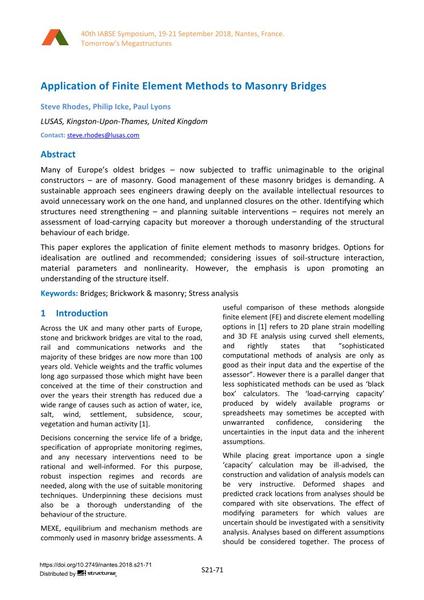Application of Finite Element Methods to Masonry Bridges

|
|
|||||||||||
Détails bibliographiques
| Auteur(s): |
Steve Rhodes
(LUSAS, Kingston-Upon-Thames, United Kingdom)
Philip Icke (LUSAS, Kingston-Upon-Thames, United Kingdom) Paul Lyons (LUSAS, Kingston-Upon-Thames, United Kingdom) |
||||
|---|---|---|---|---|---|
| Médium: | papier de conférence | ||||
| Langue(s): | anglais | ||||
| Conférence: | IABSE Symposium: Tomorrow’s Megastructures, Nantes, France, 19-21 September 2018 | ||||
| Publié dans: | IABSE Symposium Nantes 2018 | ||||
|
|||||
| Page(s): | S21-71 | ||||
| Nombre total de pages (du PDF): | 8 | ||||
| DOI: | 10.2749/nantes.2018.s21-71 | ||||
| Abstrait: |
Many of Europe’s oldest bridges – now subjected to traffic unimaginable to the original constructors – are of masonry. Good management of these masonry bridges is demanding. A sustainable approach sees engineers drawing deeply on the available intellectual resources to avoid unnecessary work on the one hand, and unplanned closures on the other. Identifying which structures need strengthening – and planning suitable interventions – requires not merely an assessment of load-carrying capacity but moreover a thorough understanding of the structural behaviour of each bridge. This paper explores the application of finite element methods to masonry bridges. Options for idealisation are outlined and recommended; considering issues of soil-structure interaction, material parameters and nonlinearity. However, the emphasis is upon promoting an understanding of the structure itself. |
||||
| Mots-clé: |
ponts
|
||||
